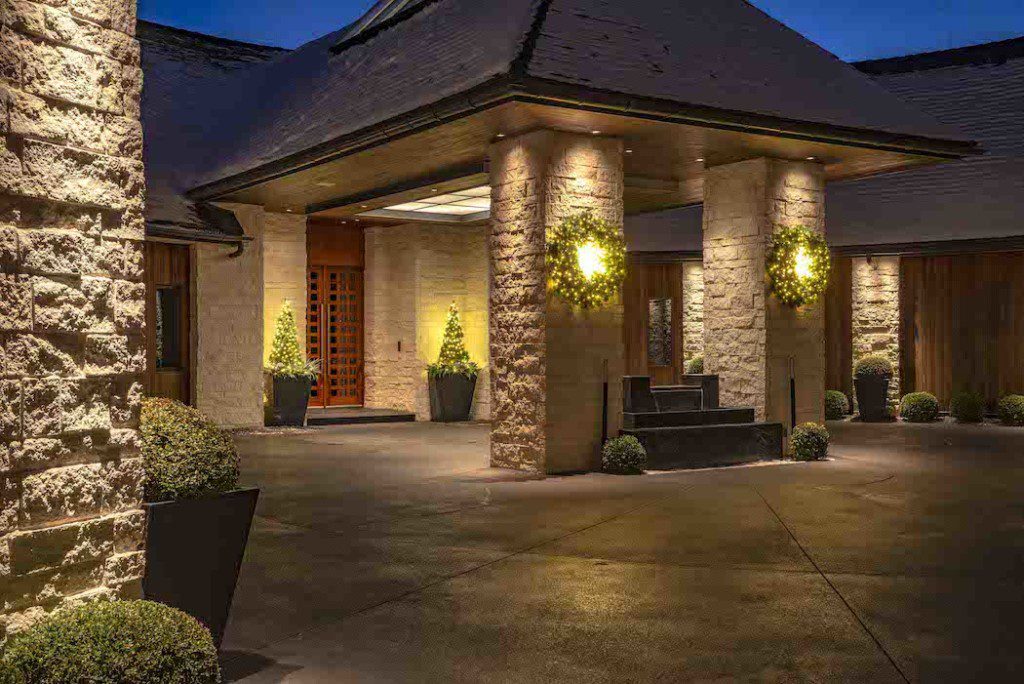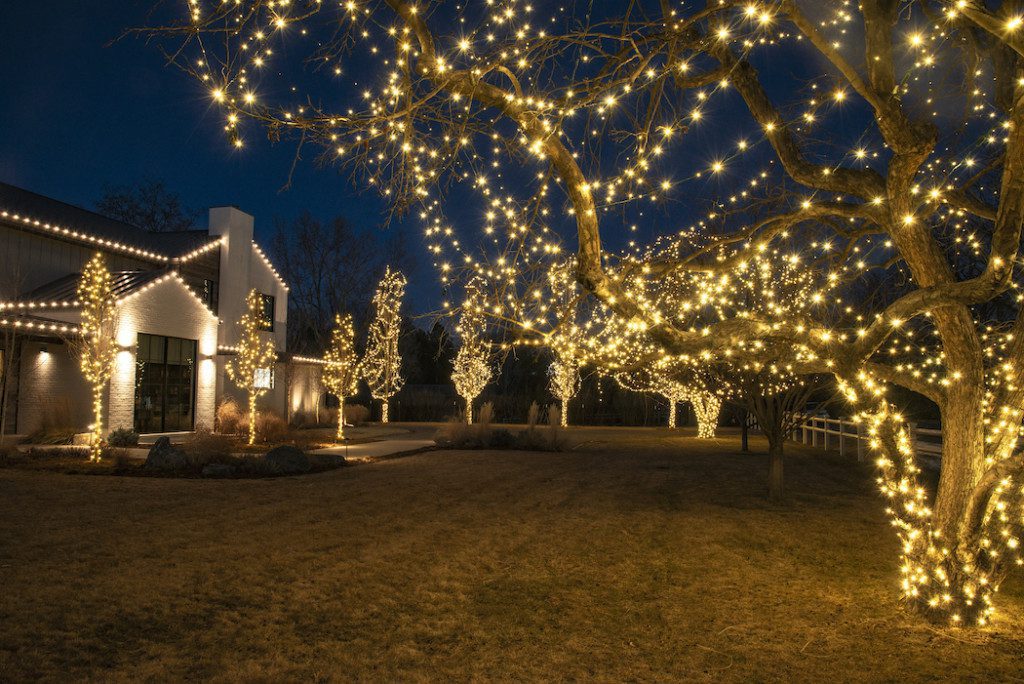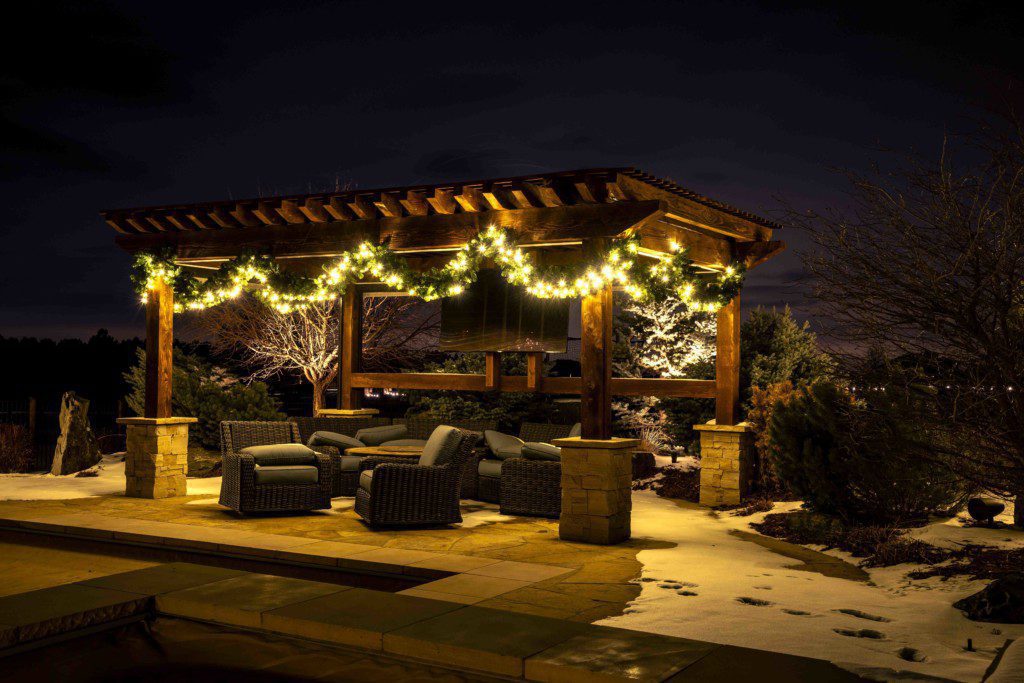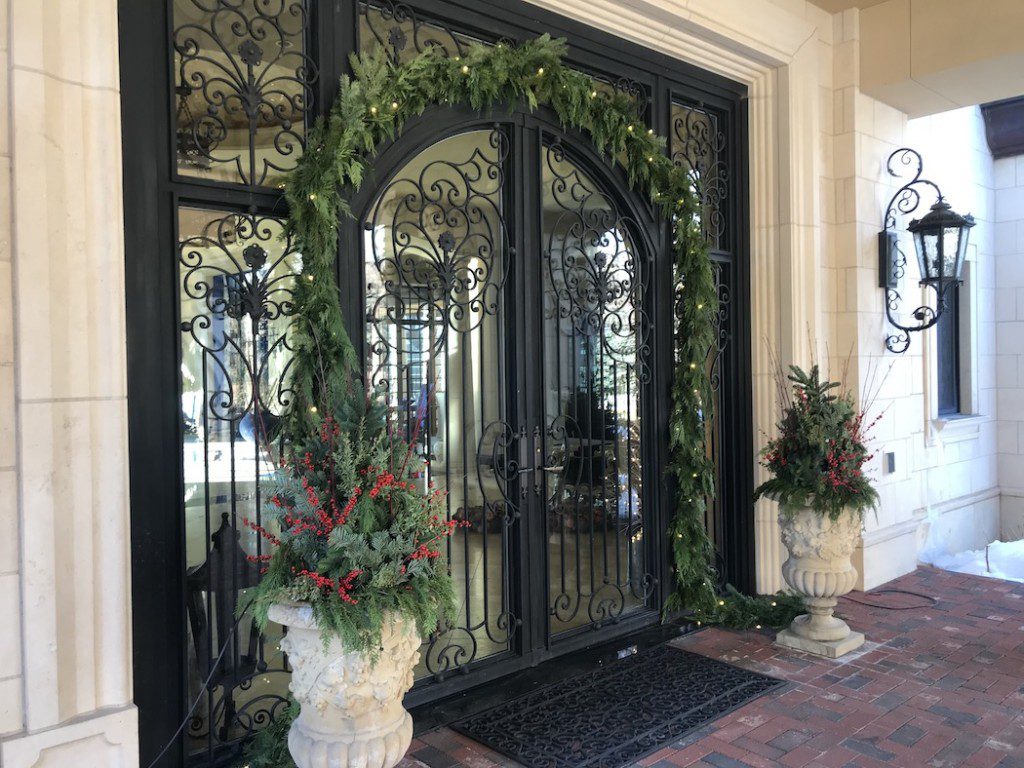Make your house the envy of the block with these insider tips.
It might seem a little early to be busting out the twinkle lights, but fall is the ideal time to start planning how you’re going to light up your yard for the holidays. After all, it’s far easier to spend a little quality time up on a step ladder or out in the yard putting things up when the wind and snow aren’t making you wonder just how fast you can drape your lights and get back inside.
Any good light display starts with time and attention, but it also requires some strategy and a bit of landscape artistry. Landscape designer Eric Ball, enhancements manager at Lifescape Colorado, is no stranger to designing epic displays—the kind that take a skilled on-site crew more than a week to create. But whether your ambitions range from lighting one perfect feature to full-on Clark Griswold, there are industry secrets, Ball says, that make the difference between a display that is just okay and one that takes your breath away.

Here are his best tips for installing beautiful holiday lights.
1. Use commercial-grade LED lights. Nevermind the stuff at Target, and forget the usual bargains at the local big box store. “For hassle-free lights that will save energy and be usable for years, you want to make that up-front investment in good quality, commercial-grade LEDs,” Ball says. This means avoiding the frustration of having that one-bulb-out-they-all-go-out situation. In addition, LED lights use hardly any energy and cost far less to use than cheaper incandescent lights.
Avoid solar powered lights as well, he adds. While the green energy aspect of solar is tempting, LEDs are an incredibly energy efficient choice, and solar lights will never get bright enough to be very visible.

2. Start with the house. This may seem counterintuitive—most of us grab lights and head straight for the prettiest evergreen in the yard. But for the most definition, impact, and visual bang for the buck, Ball swears by lighting the house first, even if you have a yard that looks like a Christmas tree farm.
“If you highlight the house as viewed through those pine trees, you still get that interest and it’s way easier to install than lighting all of those trees,” he says. Ball advises to start by lighting the outline of the roof by purchasing plastic light clips to attach strings of lights straight along your gutters. “It’s very easy to plan, because you’re working in a straight line and all you need to do is buy the linear footage you need to cover the length of the gutters,” he adds.

3. Choose what elements to highlight. As with any art, creating a lighting display is about the play of light and dark, and focal points. Short version? “Not everything has to be lit to have impact,” Ball says. You might choose to spotlight a beautiful stone facade, elegant chimney, grand front door or majestic evergreen. You might want lights strung on low shrubbery lining a pathway to draw the eye in toward the home, or you may choose to focus on wrapping the trunk of a favorite deciduous tree.
Whatever you choose, try to create a sense of balance, so not all the lit features are clustered together or at one side of the yard.
4. Don’t forget the dark spaces. This goes hand-in-hand with choosing the elements to light—in order for the lit objects to have presence and impact, they need to have interplay with dark spaces between them. “Having spots that remain dark brings the lit features forward and allows them to really sing,” says Ball.

5. Choose your hanging style. When it comes to decorating trees, Ball explains there are two options: branch wrapping and canopy wrapping.
Branch wrapping requires a great deal of lighting and is very time-intensive to create, but the effect is a total “wow” moment, he adds. This is where you see the complete skeleton of the tree, with every branch wrapped in lights from trunk to tip (think of the light displays at Vail Resort and you get the picture).
Canopy wrapping is when you drape swooping strands around the exterior of the shape of the tree, bush or shrub. It requires far fewer strands, but is still a beautiful way to create interest and accentuate the shape of a feature.
Ball adds you can definitely mix the two styles; consider choosing one tree to branch wrap as a focal point (this can be a deciduous or evergreen tree) and then complementing surrounding plantings with canopy wrapping.

6. Play with color. Lots of people love classic white, but if you have a favorite color, go for it. One client of Ball’s loves red. But to make it work, he only chooses key elements to define in red lights, leaving the rest in white to allow the red to stand out and make a statement.
7. Know when to stop. “More isn’t more, unless you’re Clark Griswold,” Ball laughs. One of the most common mistakes he sees in lighting designs is just too much of everything. This means overwhelming amounts of one color, not enough dark spaces, and a lack of balance through too many lit features—“because when everything is important, nothing is important,” he explains.

Whether you hire a pro or decide to DIY your holiday lighting, a little extra strategy and know-how can make the difference between a chaotic, not-quite-right display or one that hits all the right notes with just the right mix of sparkle. For more information about custom light designs, one of our pros at Lifescape Colorado would be happy help you realize your vision for a beautiful holiday home.
Contact us to schedule your holiday light display today.
